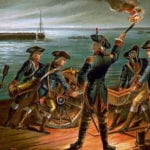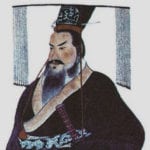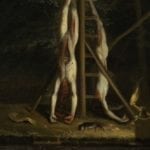 Mysteries
Mysteries  Mysteries
Mysteries  History
History 10 Surprising Stories About the Texas Rangers
 Humans
Humans 10 Philosophers Who Were Driven Mad by Their Own Theories
 Miscellaneous
Miscellaneous 10 Video-Game-Worthy Weapons and Armors from History
 Weird Stuff
Weird Stuff 10 Psychics Who Accurately Predicted Wartime Events
 The Arts
The Arts 10 Pieces of Art Inspired by a Broken Heart
 Health
Health 10 Science Fiction-Sounding New Medical Treatments
 History
History 10 Surprising Facts About the Father of Submarine Warfare
 Space
Space Ten Astonishing New Insights into Alien Worlds
 Weird Stuff
Weird Stuff 10 Bizarre Summer Solstice Rituals Still Practiced Today
 Mysteries
Mysteries Top 10 Haunting Facts About the Ghost Ship MV Alta
 History
History 10 Surprising Stories About the Texas Rangers
 Humans
Humans 10 Philosophers Who Were Driven Mad by Their Own Theories
Who's Behind Listverse?

Jamie Frater
Head Editor
Jamie founded Listverse due to an insatiable desire to share fascinating, obscure, and bizarre facts. He has been a guest speaker on numerous national radio and television stations and is a five time published author.
More About Us Miscellaneous
Miscellaneous 10 Video-Game-Worthy Weapons and Armors from History
 Weird Stuff
Weird Stuff 10 Psychics Who Accurately Predicted Wartime Events
 The Arts
The Arts 10 Pieces of Art Inspired by a Broken Heart
 Health
Health 10 Science Fiction-Sounding New Medical Treatments
 History
History 10 Surprising Facts About the Father of Submarine Warfare
 Space
Space Ten Astonishing New Insights into Alien Worlds
 Weird Stuff
Weird Stuff 10 Bizarre Summer Solstice Rituals Still Practiced Today
10 Outrageous Feasts From History
For most of human history the hunt for food was central to daily life. The struggle to get enough to eat was, and for some people still is, a very real one. It is only very recently that some people in wealthy societies find themselves chronically overfed. So one of the best ways for wealthy people to show off was to throw an extravagant feast with food in such abundance that just reading about them is enough to fill you up.
Here are ten outrageous meals and the dishes served at them.
10 Catastrophes Caused By Food
10 Vitellius’ Feast
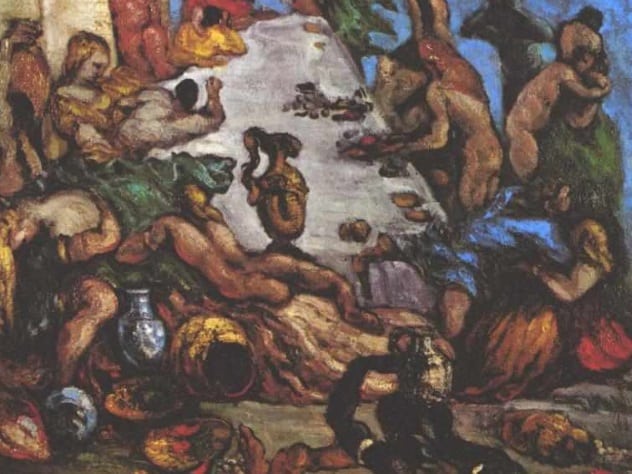
Roman orgies have become proverbial. While there were certainly often sexual antics presented to feasters it was the shear opulence of the food served up that most ancient historians found shocking. At the height of the Roman empire foods from thousands of miles away could be brought to the tables of the wealthy and swallowed down with rare vintages of wines. One emperor excelled all others in the meals he enjoyed – Vitellius used his position to raise feasting to new levels of decadence.
Vitellius, as his busts and coins show, was big man with a big hunger. He became popular with the army by lavishing them with food and drink so in the aftermath of Nero’s overthrow he was raised to the Imperial throne. For eight months he ruled Rome, or at least its dining tables.
The historian Suetonius records how he would make appointments to eat with the richest people in the city several times a day. Each meal would cost over 400,000 sesterces. “This load of victuals he could well enough bear, from a custom to which he had enured himself, of frequently vomiting.” But it was a dish that Vitellius invented that earns him a place on this list. His ‘Shield of Minerva’ was a vast dish composed in which “were tossed up together the livers of char-fish, the brains of pheasants and peacocks, with the tongues of flamingos, and the entrails of lampreys, which had been brought in ships of war as far as from the Carpathian Sea, and the Spanish Straits.”
9 Feast of the Pheasant
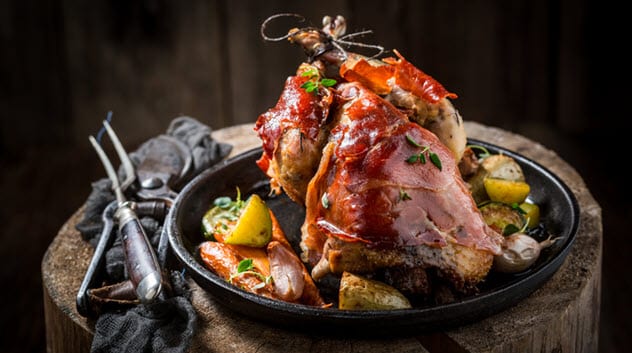
What do you do if you want to encourage people to go to war? In the case of Philip the Good, Duke of Burgundy, in 1452 he held a lavish banquet to drum up support for a crusade against the Turks. Called the Feast of the Pheasant it was one of the most lavish banquets ever held.
The feast hall was decorated with huge displays. One table featured a model church large enough to hold a choir while a further 28 musicians were hidden inside a pie. Fake ships sailed amongst the guests and a live lion could be seen in a false forest. A fire-breathing dragon swept overhead and a little boy on a deer rode about singing. The highlight of the feast was an elephant, probably mechanical, that was led into the hall by a giant Turkish man. A lady, representing Constantinople, on the back of the elephant called out for the men present to rescue her.
After 50 different dishes were served the guests swore an ‘Oath to the Pheasant’ over a living bird. They promised to participate in the crusade to recapture Constantinople but no crusade followed.
8 The Acclimatisation Society of Great Britain

In the 19th century many European thinkers joined societies designed bring non-native species into new countries. They thought that these species could be adapted to be useful to agriculture and society in general. Of course we now know that species can be invasive and cause untold damage to an ecosystem. The Acclimatisation Society of Great Britain decided to kick off their campaign with a feast.
At their first dinner guests were greeted by a hall decorated with stuffed birds and fish and the heads of other animals that they thought might be brought over to Britain. But it was the meal that really showed what new species could do for the dining tables of the nation.
Among the dishes served were birds’-nest soup (which guests thought not worth the expense) and a soup made from sea snails. Kangaroo was boiled to perfection. A course made from a rare hybrid of the hare and the rabbit was produced. Birds from Dominique, Syrian pigs, the Honduras Turkey, and all manner of fish found their way to the table. Even seaweed jelly was served. Few, if any, of these meals have made their way into the everyday English diet however.
7 Regent’s Banquet
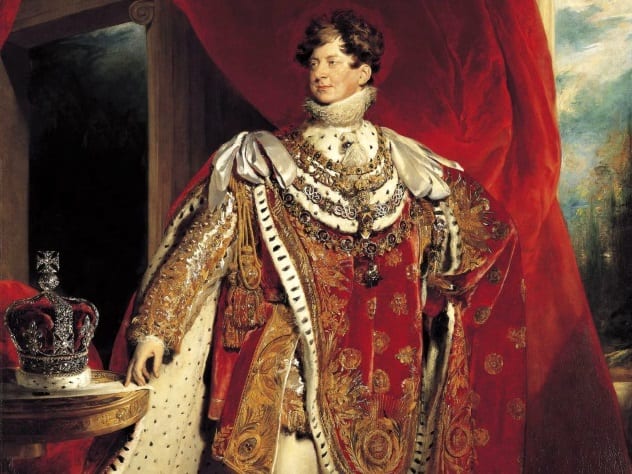
Throughout his life George IV was always a little too fond of luxury. While still Prince of Wales he managed to get into £630,000 of debt – £65,568,000 in today’s money. His father, George III, would only agree to pay this off if his son got married. Unfortunately George III became increasingly unstable and Prince George was made regent. This gave him more opportunity to spend.
One of his most lavish spending sprees was creating a gaudy pavilion in Brighton. There, in 1817, the Regent hosted a feast for Grand Duke Nicolas of Russia. This feast was prepared by the first superstar chef of Europe, Marie-Antoine Careme. Careme’s notably extravagant style was just what the Regent wanted.
The banquet featured (among many, many others) dishes like rice soup, the head of a great sturgeon in champagne, chicken in aspic, haunches of boar, a terrine of larks, upside-down lemon jelly, truffles in warm linen, and a pyramid of shrimp. In total 121 different dishes were served to guests. The Prince Regent was always in debt, but hardly ever in a caloric deficit.
6 Manchu-Han Feast

Sometimes a single day is just not long enough to fit in all the gormandising you plan to do. The Manchu-Han feast was so luxurious that it took three days to serve all the foods – or so the story goes. This meal became a symbol for Chinese unity.
Under the rule of Emperor Kangxi there was increasing tension between the Manchu and Han factions in the nation. To bring them together the emperor decided that only a superlative meal could heal the rift. For his 66th birthday he held six banquets over three days which saw over 300 dishes being served.
Among these dishes you could sample ones called Snowy Palm, a bear claw with sturgeon, and Golden Eyes and Burning Brains, made from bean curd and bird brains. One of the dishes was an “imitated leopard fetus,” though no one is sure what was used for the imitation. Simpler plates featured grilled ape. Some scholars question whether this feast ever actually happened but most chose to believe that it did, or dream about being one of the diners.
10 Bizarre Food Developments We May See In The Future
5 The Fête at Vaux
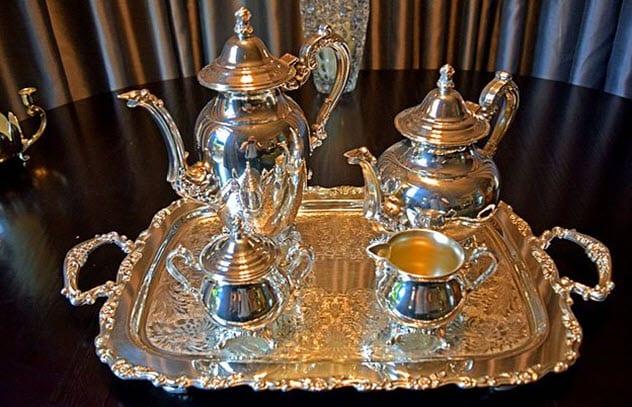
Few parties can be said to have led to political disgrace but the one held by Nicolas Fouquet in 1661 certainly sealed his fate. The fete at Vaux-le-Vicomte, Fouquet’s palatial home, was so magnificent that the king of France decided it must have been paid for by Fouquet plundering the royal treasury.
Fouquet was in charge of finances in France and the young king Louis XIV was already suspicious of Fouquet’s management. Yet Louis accepted an invitation to Fouquet’s new château. 6000 other guests were invited and so many carriages filled the road that traffic was jammed for miles. At the fete guests were treated to a production of a newly written play by Moliere and best art available in France at the time.
At the meal most guests dined from solid silver, while the royal family was served from solid gold plates. Dishes included pies of pigeon meat, veal steaks stuffed with delicacies, and imported oranges. Actors dressed as fauns and elves gave out diamonds to the ladies present. So spectacular were the fireworks and entertainments of the feast that Voltaire commented “On 17 August, at six in the evening Fouquet was the King of France.”
Voltaire however added “But at two in the morning he was nobody.” The king was now convinced that Fouquet must have embezzled money to pay for all this. Within weeks Fouquet was arrested and imprisoned. He would spend the rest of his life in jail.
4 Banquet of Chestnuts
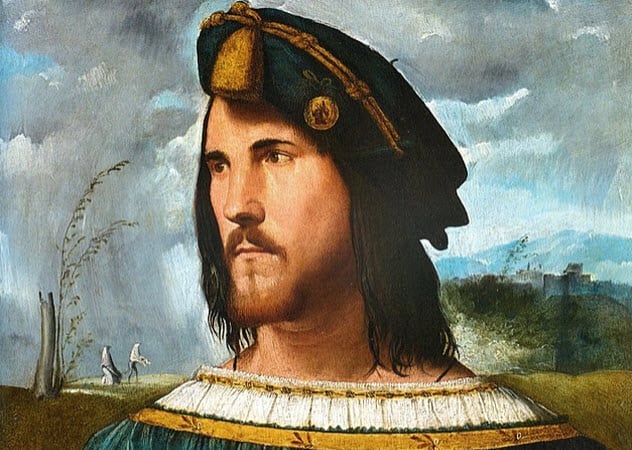
Sometimes the entertainments presented at a feast overshadow the dishes on the table. At the Banquet of Chestnuts it was very definitely the events occurring under the table that caught most people’s interest.
The Vatican is not particularly noted for its rocking night life today but there have been times when the Popes have hosted lavish affairs, in all senses of the word. Pope Alexander VI, Rodrigo Borgia, was a member of one of Italy’s most notorious families. Unusually for a celibate priest he had children. The Pope’s son Cesare was to be the host at the Banquet of Chestnuts.
On the 31st of October, 1501 Cesare arranged a banquet in the Papal Palace. According to the official in charge of ceremonies this party was attended by “’fifty honest prostitutes’ called courtesans, who danced after dinner with the attendants and others who were present, at first in their garments, then naked. After dinner the candelabra with the burning candles were taken from the tables and placed on the floor, and chestnuts were strewn around, which the naked courtesans picked up, creeping on hands and knees between the chandeliers, while the Pope, Cesare, and his sister Lucretia looked on. Finally, prizes were announced for those who could perform the act most often with the courtesans, such as tunics of silk, shoes, barrets, and other things.”
3 The Epicurean Masters of the World
Epicurean philosophers preached the virtue of pleasure but they believed in taking joy in simple pleasures. For Epicurus a good treat was a simple pot of cheese. Yet the word Epicurean has come to suggest gluttons chasing rare dainties. It was in this sense that in 2007 the “Epicurean Masters of the World” gathered in Bangkok.
For 1 million Baht, around £15,000, per head the guests were able to enjoy food produced by six chefs who each had 3 Michelin stars to their name. Using only the finest ingredients the chefs created their signature dishes. The feast began with crème brûlée of foie gras with Tonga beans and was followed with tartar of Kobe beef with Imperial Beluga caviar and Belons oyster. Each of the dishes was paired with one of the rarest and most expensive wines on the planet. Apparently Mousseline of pattes rouges crayfish with morel mushroom infusion is best served with an Alain Soliveres 2000 Corton-Charlemagne.
The feast ended with an extravagant gingerbread pyramid. And maybe a bit of indigestion.
2 Raiding a Zoo

For four months from September 1870 the city of Paris was under siege by Prussian forces. Instead of bombarding the city it was decided that Paris would be starved into submission. For the people of the city food soon became scarce. The Parisians ate thousands of horses, their dogs and cats, even rats became prized meals. One restaurant however served a more exotic menu.
Alexandre Étienne Choron was one of the most famous chefs of his age. His restaurant Voisin was famed for its brilliant food. With ingredients running low it was perhaps inevitable that when the Paris Zoo announced it would have to put down its animals because they could no longer feed them that Choron should see an opportunity. He would serve an extraordinary Christmas meal.
The feast began with a donkey’s head accompanied by sardines, an elephant consommé, fried camel, kangaroo stew, wolf with a deer sauce, and an antelope with truffles. Though there were limited supplies of food Choron still had access to the wines of Paris’ fully-stocked cellars. The finest wines were paired with these wild dishes.
1 Cleopatra
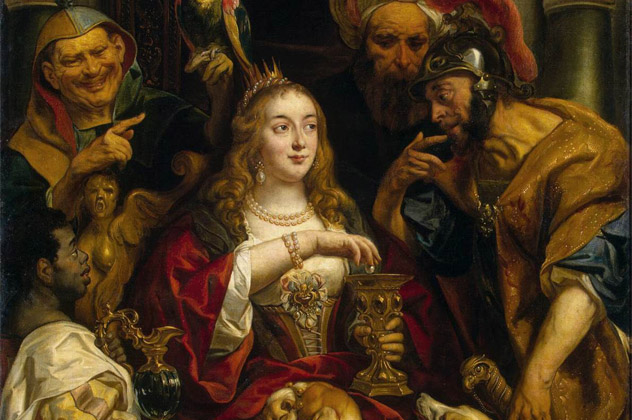
Cleopatra VII of Egypt was one of the most alluring women of her age. Witty, educated, and seductive she formed relationships with both Julius Caesar and Mark Antony. Being monarch of one of the richest nations on Earth was also attractive. But perhaps it was her cuisine that brought all the Roman boys to her palace.
The historian Plutarch recorded that his grandfather had visited Cleopatra’s palace and seen her huge kitchens. When he saw 8 whole boars being roasted he assumed that a huge feast was being prepared. Instead he was told that only 12 people were dining. The boars were all cooked at slightly different times so that one would be perfectly ready whenever the guests sat down at the table.
One feast was even more expensive than all the others. Cleopatra bet Antony that she could spend 10,000,000 sesterces on a single meal. When the meal was served it was nothing special so Antony thought he had won but then Cleopatra called for the dessert – a single bowl of vinegar. Cleopatra owned two of the most perfect pearls in all the world that she wore as earrings. She plucked one from her ear and dissolved it in the vinegar before drinking it down and winning the bet.
Vinegar will not actually dissolve a pearl so some have conjectured that Cleopatra won her bet and managed to keep her pearl as well. She would just have had to go fishing for the pearl in her chamberpot and not the deep sea.
10 Luxury Foods That’ll Break Your Bank




